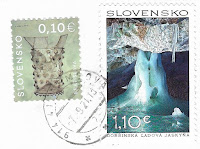Danube Limes refers to the Roman military frontier or limes which lies along the River Danube
 |
| Cygnus-Relief found in Vindobona |
This postcard was sent by Marco
Vindobona was the name of a Roman army camp that existed nearly 2000 years ago in what is now the historic city centre of Vienna. The legionaries’ mission was to protect the northern border of the Roman Empire. The underground area of the Roman Museum contains the remnants of two tribunes’ houses, Vienna’s most important archaeological finds from this era.
 |
| Remains of a hypocaust, found below Hoher Markt |
In addition to their military duties, the approximately 6000 soldiers living in the camp engaged in administrative activities and worked in trades and crafts. The periods of peace were longer than those of warfare. The legionaries also enjoyed recreational facilities, from taverns and baths to brothels.
 |
| Fragment of Vindobona municipal charter tablet |
In 1913, during excavations at the address "Am Hof 4" in Vienna, a fragment of a bronze plaque was found near the southern wall within the former legionary camp of Vindobona. Of the 41 characters, only the words "edicta" and "Galba" could be deciphered with certainty. It was assumed that text was an edict of the Emperor Galba. Since then, the fragment has been stored in the depot of the Wien Museum along with 150,000 other excavated objects.
By analogy with other excavations, the historian Niklas Rafetseder has now been able to prove that the bronze plaque from the Wien Museum's depot is the fragment of a Roman city law plaque. The town charter most likely refers to the civil or camp suburb of the legionary site of Vindobona, whose status as a municipality between 120 and 250 AD can now be established with a high degree of certainty. - in: https://www.wienmuseum.at/en/locations/roemermuseum
 |
| Porta Praetoria |
This postcard was sent by Marcel
Coming into the city centre from the river, you can see Germany’s most ancient stone building, the Porta Praetoria, a gateway dating from 179 A. D. Giant blocks of stone were used to construct this gate in the northern wall of the Roman military camp. It survives as a reminder of Castra Regina, the Roman settlement. - in: https://tourismus.regensburg.de/en/special-themes/more-sights-to-explore/architectural-monuments/porta-praetoria.html
 |
| Gerulata - Altar, Rider Spearman and Blacksmith |
This postcard was sent by Tomáš
Gerulata was a Roman military camp located near today's Rusovce, a borough of Bratislava, Slovakia. It was part of the Roman province of Pannonia and was built in the 2nd century as a part of the frontier defence system. It was abandoned in the 4th century, when Roman legions withdrew from Pannonia.
Archaeologists have unearthed its remnants and their discoveries are on exhibition in the hall of the museum, which is open in summer and can be found behind the Catholic Church of St Mary Magdalene in the town. Beyond the remains of the Roman forum, fragments of structures and gravestones, bronze, iron, ceramic and stone pieces are on show in a museum showing daily life. - in: wikipedia




No comments:
Post a Comment